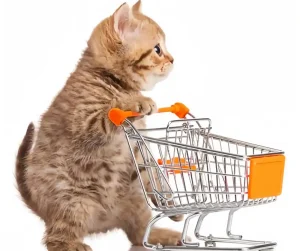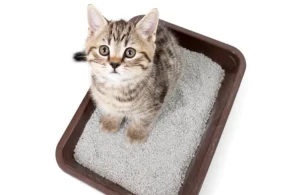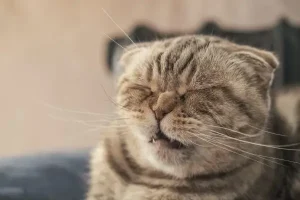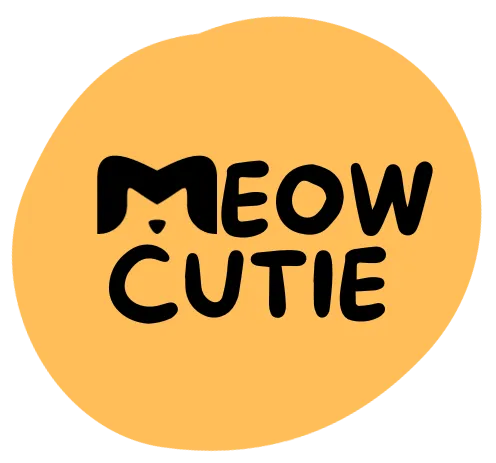Table of contents
- Unveiling Global Pet Markets: Exploring Pet Industry Stats Worldwide
- Inside the US Pet Economy: Key Pet Industry Stats and Trends
- Global Pet Perspectives: Analyzing Pet Industry Stats and Worldwide Trends
- China’s Future Pet Industry: Rise of Boutique Factories
- China’s Future Pet Industry: Embracing Micro-Innovations and Niche Markets
- China’s Future Pet Industry: Exploring Brand Self-Broadcasting and Offline Growth
Unveiling Global Pet Markets: Exploring Pet Industry Stats
The pet industry is flourishing, propelled by the rise of e-commerce platforms, the emergence of innovative pet technology products, and the growing demand for high-quality organic pet food. With an increasing number of adults opting to adopt pets rather than immediately start families, and millennials emerging as the primary demographic of pet owners, the scale and influence of the pet industry continue to expand.
Just how large is the pet industry, and what does the future hold?
This article delves into the pet industry, providing over 15 latest statistical insights for your reference.
The pet industry has grown by 450% in the past 25 years.
The pet product market today looks vastly different from a quarter-century ago. Specialized pet foods are now widely adopted, and there’s a rising demand for new pet technologies, including microchips and home DNA testing.

2027, the pet industry is projected to reach $358.62 billion.
Industry experts anticipate that over the next five years, the pet industry will experience a compound annual growth rate (CAGR) of 6%. This significant growth trajectory is predominantly propelled by advancements in technology, which are revolutionizing various aspects of pet care, from nutrition and healthcare to monitoring and communication.

Technology provides pet owners with new ways to ensure the safety, health, and entertainment of their pets.
The implantation of microchips is increasingly becoming a standard practice in many pet shelters. It provides a reliable method for identifying lost pets and reuniting them with their owners. Meanwhile, pet treadmills and cameras represent just a few examples of the innovative products making strides in today’s market. They offer pet owners convenient solutions for ensuring their pets’ physical fitness and monitoring their well-being. This monitoring can be done even while they’re away from home.

The market value of exotic pet products is $3.6 billion.
Small and exotic pets have their own unique product categories. These pets include reptiles, birds, small mammals, and amphibians. Each type of exotic pet comes with specific dietary preferences, housing needs, and habitat requirements. Consequently, pet owners often invest in specialized food formulations, water treatment solutions, bedding materials, and cleaning products. These products are tailored to meet the unique needs of their exotic companions. This niche market offers a wide range of opportunities for pet product manufacturers and retailers. They cater to the diverse needs of exotic pet owners.

66% of American households, a significant rise from 56% in 1988, now own pets.
In the United States, there are more households with pets than there are households with homes. Approximately 86.9 million American households own pets, surpassing the number of households owning homes.

The millennial generation comprises the largest segment of pet owners, accounting for 32% of all pet owners.
As millennials enter their 30s and 40s, they are seeking more stability and companionship from animals. Today, nearly one-third of pet owners were born between 1982 and 2000. Baby boomers account for 27% of pet owners, Generation X accounts for 24%, and Generation Z accounts for 14%.
The likelihood of millennials becoming pet owners is three times higher than that of becoming parents.
Millennials may not plan to have more children in the future. However, their enthusiasm for pet ownership remains strong. Within the 20 to 38 age group, over a quarter of individuals are proud pet owners. Additionally, more than half of them share their homes with cats. This trend underscores the deep bond between millennials and their furry companions, shaping the landscape of modern pet ownership.
Inside the US Pet Economy: Key Pet Industry Stats and Trends
How do pet owners in the US spend their money?
Pet ownership goes beyond just purchasing food and treats. People spend money on veterinary care, toys, leashes, and technological devices for their pets. This section will explore consumer trends and the revenue generated by each segment of the pet industry market.
Every year, Americans spend $136.8 billion on pet products.
In 2020, the pet industry hit a significant milestone with sales exceeding $100 billion. This growth continued into 2021, reaching $123.6 billion. The increasing value placed on pets’ well-being is evident in the market’s diversification, offering a wide range of choices, including organic premium food, innovative pet technology devices, and convenient subscription boxes.
Organic food options are popular as owners prioritize their pets’ health. Tech devices provide convenience, allowing owners to stay connected remotely. Subscription boxes offer curated selections of toys, treats, and accessories, adding excitement to pet care routines. This evolving relationship between humans and pets is reflected in owners’ willingness to invest in products that enhance their pets’ happiness.
Americans spend $1,533 annually on their dogs.
On average, Americans spend no less than $125 per month on their pet dogs, while the yearly average expenditure for owning a cat amounts to $1,499. It is widely acknowledged that, compared to dogs, the maintenance costs and time commitments associated with cats are generally lower. However, cat owners often have more than one cat, which can increase both the financial and time investments required for their care.

Global Pet Perspectives: Analyzing Pet Industry Stats and Worldwide Trends
The global pet industry is vast and growing rapidly. People are adopting more pets, taking better care of their health, and seeking higher-quality products. The pet industry is also expanding into exciting new verticals. Pet technology, as well as natural pet food and treats, are significant opportunities for pet suppliers to explore.

Since 2011, global pet industry expenditures have increased by 115%.
Throughout the late 20th century, sales continued to grow as expected, with significant growth truly beginning in the 2000s. Since then, pet expenditures have steadily climbed from slightly over $50 billion in 2011. If this trend persists, the pet industry could potentially become a $200 billion industry by 2030.
40.5% of all pet product expenditures are allocated to pet food and treats.
Any pet owner would acknowledge that feeding and rewarding their companions are among the most significant expenses in pet care. In 2020, Americans spent $35 billion on pet food and treats.
The global organic pet food industry is valued at approximately $22.8 billion.
In the eyes of their owners, pets are considered a part of the family. With humans consuming more organic food, they tend to maintain their pets’ diets to human standards. In fact, despite being relatively new, the organic and natural pet food industry has more than doubled in the past 10 years. Leading brands in this sub-market include Diamond Naturals and Castor & Pollux ORGANIX.
Wearable pet technology products are projected to generate $4.6 billion in revenue by 2027.
Wearable technology, including radio-frequency identification (RFID) devices, GPS trackers, and motion sensors, is one of the fastest-growing markets in the pet industry. This market was valued at $1.8 billion in 2020 and is expected to experience explosive growth over the next five years.

Approximately 3.45 million pets are insured in North America alone.
While the average monthly cost of owning a pet may seem affordable to most, unexpected veterinary expenses can be financially devastating. Insurance is a prudent way to manage the financial risks associated with pet ownership, just like with homeownership, automobiles, or any other assets. The pet insurance industry has been growing steadily at an annual rate of 23.4%.

More and more American pet owners are purchasing CBD products for their pets.
From snacks and supplements to shampoos and oils, CBD pet products are on the rise. CBD pet brands promise to help alleviate anxiety in pets as well as inflammation and joint pain in elderly pets.

China's Future Pet Industry: Rise of Boutique Factories
In the past year, large factories have seen steady growth, while smaller ones experienced modest increases. This contrasts with many smaller practitioners, as bankruptcies indicate ongoing industry differentiation. Some may face elimination due to consumer demands for higher-quality products and lack of R&D capabilities.
Amidst the industry reshuffle, small and refined approaches emerge as key responses to 2024’s challenges. Overcapacity is evident, so assessing order support for expansion is crucial. Future factories will prioritize being small and refined, with a focus on differentiated innovation.

China's Future Pet Industry: Embracing Micro-Innovations and Niche Markets
Amidst the industry-wide trend of price wars, there are differing opinions among industry insiders. While some believe that technological innovation will become a standard feature for brands, they also assert that it won’t necessarily be the core competitive advantage. Moreover, as there are no major players emerging in the foreseeable future, the creation of super brands will become increasingly challenging. Brands still need to pinpoint their positioning and delve into niche areas to unearth unmet consumer needs.
Taking our Crystal Cat Litter and Paper Cat Litter as examples, these products integrate innovative functionalities onto the foundation of traditional cat litter. Just like humans, pets also face health issues, and these products provide the functionality of a health indicator for cats in a convenient form, along with strong odor control capabilities. Our innovations have yielded significant success in the Chinese market. In January and February 2024, these products consistently ranked high on pet product search rankings, demonstrating their ability to effectively address the concerns of pet owners.

Pet product design and innovation often draw inspiration from human products. These include shampoos, pet grooming tools, conditioners, clothing, cakes, ear cleaners, eye cleaners, and more. Originally designed for humans, they are adjusted and optimized for pets, including ingredients, formulas, scents, packaging, and more. There are many innovative opportunities to explore in the pet product industry, in conjunction with human products.
In consumer research, pet owners are increasingly concerned about scientific pet care. This extends to various scenarios and life stages, including infancy, growth, adulthood, and old age. Different products are chosen for each stage, as the needs of pets vary throughout their lifecycle. Pet food, for example, now caters to the specific needs of pets at different ages. Sales of cat food for pregnancy/lactation/weaning stages are growing rapidly, while in dog food, breeding and old age are considered incremental stages.

As the number of pet owners continues to rise, there is a noticeable trend towards a younger demographic among them. According to the latest data, young people, especially those in China’s emerging and lower-tier cities, comprise the majority of pet owners. This younger demographic tends to be more generous in their pet-related spending, with Generation Z showing the most significant increase in consumption. Furthermore, during the first half of 2021 to the first half of 2023, the top ten brands in the pet market accounted for 15.6% of the market share, a relatively stable proportion. This indicates that the pet market has not yet seen a significant concentration of brands and remains a fragmented market.
China's Future Pet Industry: Exploring Brand Self-Broadcasting and Offline Growth
The past decade has seen significant growth in Chinese e-commerce platforms. Many pet brands have expanded into e-commerce and experienced rapid growth. However, today, the dividends from e-commerce are diminishing. Many brand managers admit that achieving a 40% to 50% return on investment on current platforms is considered ideal. Some are even nearing 70%, finding that the more they invest, the less profitable it becomes.
The cost of platform traffic has risen several times over. This poses a significant challenge for brands that rely on traffic for customer acquisition. The high cost of traffic not only affects the advertising efficiency of mainstream e-commerce platforms but also prompts many companies to realize the need for change in e-commerce live streaming.
According to February 2024 sales data from Douyin (TikTok), the top 15 selling pet stores are all official stores that conduct self-broadcasting. Moreover, new broadcasters account for over 40% of sales in the entire pet category on Douyin. This indicates that an increasing number of brands are gradually breaking away from dependence on top broadcasters and choosing new influencers for promotion.

With the increasing number of pet grooming salons and hospitals, offline channels have become a major source of growth for brands. As of June 2023, the estimated number of pet stores in China (excluding Hong Kong and Macau) is 91,858, showing a 4.45% decrease compared to the previous period but a 9.85% increase compared to the beginning of the year. Among the 31 key cities tracked for pet ownership, these cities collectively have 41,761 pet stores as of early June 2023. Shanghai, Chengdu, and Beijing are the top three cities with 3,710, 3,072, and 2,981 pet stores, respectively.
According to the “2023-2024 Report on the Operation and Consumer Market of China’s Pet Industry,” in the first half of 2023, the number of pet grooming salons reached 32,000, showing a 5.8% year-on-year increase. The number of pet hospitals reached 18,000, showing a 7.1% year-on-year increase, while the number of pet supply stores reached 15,000, showing a 6.3% year-on-year increase.
As offline consumption scenes gradually recover, offline channels are expected to be a growth driver this year. Among them, integrated retail channels that connect online and offline experiences and offer high efficiency to consumers for convenient shopping are highly favored. These channels represent a promising arena for seeking growth opportunities.






